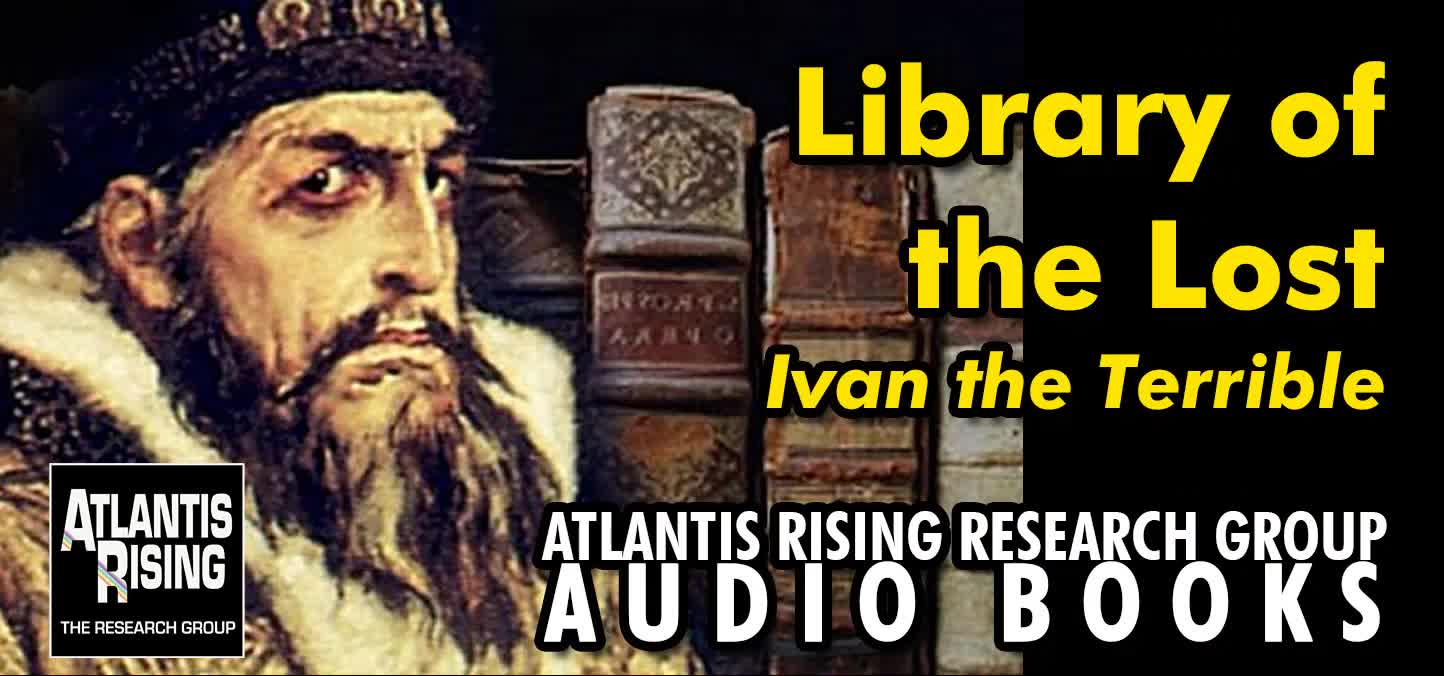Premium Only Content

Library of the Lost - Ivan the Terrible and the Lost Library
Ivan the Terrible’–or, for Russian traditionalists, “the Formidable” or “Fearsome”–earned his dubious reputation. Ivan IV Vasilyevich, the first self-termed ‘Tsar’ of Russia, the mentally unstable tyrant who ruled Russia from 1533 to 1547, led the motherland into costly wars, murdered his own son, and, five centuries later, attracted the admiration of another Russian mass murderer Josef Stalin, but despite centuries of digging, one of the great mysteries of Ivan the Terrible remains buried somewhere deep beneath the Kremlin.
The “Golden Library,” or Lost Library of the Moscow Tsars, was assembled by Grand Duke Ivan III (the Great), father of Ivan IV. Responsibility for its unexplained disappearance, however, is attributed to the son. In Atlantis Rising Magazine #66, writer Steven Sora told the story.
In the middle of the fifteenth century Constantinople was about to be invaded by the Asian hordes, and the greatest treasures of the city needed to be protected at all costs. Sophia Palaiologina, the emperor’s niece, was hastily married to the young Ivan III, soon to become ruler of Russia. Sophia’s entourage with the treasures of Byzantium, including Constantinople’s library, possibly the greatest outside the Vatican, would ultimately make it to Moscow via Rome. Chronicles still preserved in Moscow tell how one hundred carts of rare books struggled overland. Included were works from Asia, Africa and Europe in Hebrew, Arabic, Greek, Latin and Egyptian, with early editions of Pindar, Polybius, Tacitus and Cicero, the poems of Kalvos, the works of Virgil and “Lives of the Twelve Caesars” by Suetonius. Considered one-of-a-kind, many were hand written. Several hundred jewel encrusted volumes were intended as gifts for Emperors. The value of the collection, then and now, is beyond calculation.
One of Ivan III’s greatest achievements was beginning construction of the Kremlin. Under his direction the vaults of the “Liberia,” as the library came to be known, were built underground. Italian architect Ridolfo (Aristotle) di Fioravanti was given responsibility for constructing a hidden vault deep beneath the Kremlin. From here, it is believed, three hundred underground tributaries of the Muscovy River once flowed. The architect would close off such waterways and then line the walls with brick. To this day, no one knows just how many such rooms and tunnels exist within the labyrinth.
When Ivan IV ascended to the throne he began a ruthless assault on the Russian aristocracy known as the Boyars who he believed had mistreated and ignored him during his youth. To achieve his purposes, Ivan vastly expanded the subterranean city he had inherited. The labyrinth beneath the Kremlin now included secret prisons and torture chambers designed to break the power of the elite. After stripping the boyars of their wealth, Ivan turned his attention to the Russian population. The Massacre of Novgorad saw over thirty thousand Russians killed and the city nearly depopulated. He would beat his daughter-in-law until she miscarried and then kill his son who tried to stop him.
The reign of terror did not end until Ivan’s death. As Ivan had been losing his mind, Russia, distracted by other issues, had lost track of the library’s location, and it has not been recovered since. Some think that Peter the Great, over a century later, may have found and moved the library. But, as far as we know, the great maze beneath the Kremlin was too much even for Peter.
Stalin, it is said, wished to create one of the world’s greatest subway systems, and built upon the original Kremlin network. The massive tunneling of his Moscow subway, is still evident in seemingly endless escalators descending apparently to the very bowels of the earth. All excavations were executed with special care in hopes that one of the library’s secret rooms might be uncovered. No such rooms were ever found, however. Even a secret subway intended for the protection of rulers and generals never produced any Byzantines treasures.
In the 1960s Nikita Khruschev also pursued development of the subterranean domain beneath the Kremlin, extending the subway system and perhaps merging at lease some of its secret routes with the public metro. Khruschev too, it seems, dreamed of uncovering the famed library, and instructed project managers to take all necessary steps to locate and preserve with care the library of Ivan. But instructions notwithstanding, all the dictator’s men could not uncover what the Tzar’s men had covered.
Nearly five centuries after Ivan the Terrible, it is clear that the ability of tyrants to destroy great achievements, still does not translate into an ability to preserve them.
-
 0:19
0:19
Atlantis Rising Research Group
2 years agoJoin the ATLANTIS RISING RESEARCH GROUP!
1.04K1 -
 44:46
44:46
Stephen Gardner
5 hours ago🔥 Col. Macgregor Reveals Putin's Hypersonic Strike Plan – Is Ukraine Ready for Revenge?
45.5K47 -
 1:10:25
1:10:25
Professor Nez
7 hours ago🚨Trump Just Unleashed the Deep State's WORST NIGHTMARE! (FULL BREAKDOWN)
30.9K137 -
 28:09
28:09
Michael Franzese
16 hours agoThese Athletes Are STEALING Gold Medals From Women | Deep Dive
75.1K47 -
 6:04:01
6:04:01
TheItalianCEO
9 hours agoGTA V RP First Time EVER (help)
71.4K4 -
 15:22
15:22
Russell Brand
2 days agoSO IT BEGINS.....
289K360 -
 5:41
5:41
Chef Donny
2 days agoPan Frying Dumplings With Thanksgiving Leftovers | Tasty Tailgating Ep. 12
61.1K1 -
 6:50:37
6:50:37
Scottish Viking Gaming
9 hours agoSTALKER 2 | Sunday Funday | The Zone makes my Brain Fuzzy
42.4K2 -
 3:57:16
3:57:16
LumpyPotatoX2
10 hours agoNew Fortnite Season - #RumbleGaming
52.2K3 -
 15:06
15:06
Forrest Galante
1 day agoShooting Invasive Flying Carp with a Bow
165K52